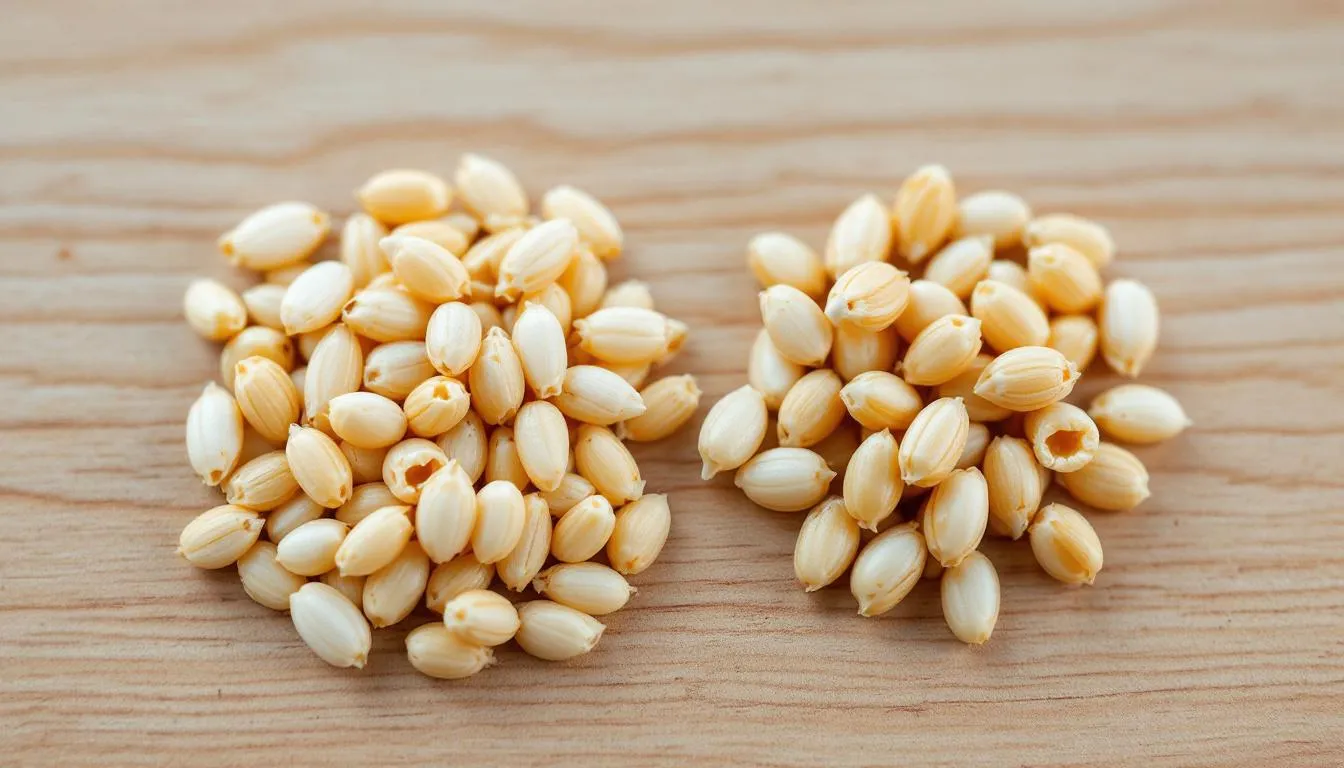Few beer styles capture the essence of refreshment quite like wheat ale beer. With its characteristic cloudy appearance, smooth mouthfeel, and approachable flavor profile, wheat ale has become a beloved choice for both casual drinkers and serious beer enthusiasts. From the banana and clove notes of German hefeweizen to the citrusy brightness of Belgian witbier, wheat beers offer an impressive range of flavors while maintaining their signature drinkability.
This comprehensive guide explores everything you need to know about wheat ale beer, from its ancient origins in Bavaria to modern American interpretations. Whether you’re looking to understand the brewing process, discover new styles, or find the perfect food pairings, you’ll find practical insights to enhance your appreciation of this versatile beer category.
What is Wheat Ale Beer?
Wheat ale beer is a top-fermented ale brewed with a significant proportion of wheat grain alongside traditional malted barley. Typically containing 30-60% wheat in the grain bill, these beers are distinguished by their use of ale yeast rather than the bottom-fermenting yeast used in wheat lagers. This fermentation method, combined with wheat’s unique properties, creates the style’s signature characteristics.
The origins of wheat ale trace back to Bavaria, Germany, where brewing traditions developed over centuries. While early civilizations may have brewed with wheat before barley became dominant, the modern wheat ale tradition flourished in German regions where royal licenses once controlled production. The style nearly disappeared in the 19th century but experienced a remarkable revival starting in the 1960s, thanks to changing consumer preferences and improved brewing techniques.

What makes wheat ale beer distinctive is its cloudy appearance, which results from wheat proteins and suspended yeast particles. Unlike heavily filtered beers that achieve crystal clarity, most wheat beers embrace this natural haze as part of their character. The lack of husks in wheat grain contributes to a smoother, creamier mouthfeel compared to all-barley beers.
Alcohol content in wheat ales typically ranges from 2.5% to 5%, making them highly sessionable. This moderate strength, combined with refreshing acidity and lower hop bitterness, positions wheat ale as an ideal choice for extended drinking sessions or warm weather consumption. The style’s approachable nature has made it a gateway beer for many newcomers to craft brewing.
German regulations require that weissbier contain at least 50% wheat malt and use top-fermenting yeast, establishing clear parameters for traditional styles. However, modern interpretations have expanded these boundaries while maintaining the core characteristics that define wheat ale beer.
Types and Styles of Wheat Ale Beer
The world of wheat ale encompasses diverse regional traditions, each bringing unique ingredients, techniques, and flavor profiles to this versatile beer category. From the yeast-driven complexity of German styles to the spiced character of Belgian variants, wheat beers demonstrate remarkable diversity while sharing common foundations.
Understanding these different approaches helps appreciate how geography, tradition, and innovation have shaped wheat ale beer into the varied category we know today. Each style represents centuries of refinement, adapted to local tastes and available ingredients, such as British beer styles.
German Wheat Ales (Weizen/Hefeweizen)
German wheat ales represent the most traditional expression of the style, with strict brewing regulations and distinctive flavor characteristics. The german word “weizen” simply means wheat, while “hefe” refers to the yeast that remains in these unfiltered beers. Classic Bavarian hefeweizen showcases the interplay between wheat malt and specific yeast strains that produce unmistakable banana and clove flavor notes.
These beers typically contain 50-70% wheat malt, creating their signature creamy mouthfeel and persistent foam. The fermentation process occurs at slightly elevated temperatures (66-75°F), encouraging yeast to produce the esters and phenols responsible for the style’s characteristic aromatics. Traditional German wheat ales avoid heavy hopping, allowing the wheat and yeast character to dominate.
Authentic German wheat ales are served unfiltered, preserving both the yeast that contributes to flavor development and the proteins that create the beer’s distinctive cloudy appearance. This approach requires careful handling during transportation and storage but rewards drinkers with complex, evolving flavors.
Examples of exemplary German wheat ales include Weihenstephaner Hefeweissbier, often considered the gold standard, and Paulaner Hefe-Weizen, which demonstrates the style’s approachable character. These beers are traditionally served in tall, curved vase-shaped glasses that showcase the beer’s appearance while concentrating its aromatic compounds.
Belgian Witbier
Belgian witbier, also known as white beer, represents a distinctly different approach to wheat brewing that emphasizes spice additions and unique fermentation character. This style traditionally uses both malted and unmalted wheat, often comprising 50% or more of the grain bill, combined with signature spices including coriander and orange peel.
The Belgian approach creates beers that are pale, refreshing, and complex, with citrus notes from both orange peel additions and specific yeast strains. Unlike German wheat ales, Belgian witbier tends to be more tart and dry, with spices providing additional complexity rather than relying solely on yeast character.
Historical records show that Belgian white beers nearly disappeared by the 1960s before Pierre Celis revived the style with Hoegaarden in 1966. This revival sparked international interest and inspired countless modern interpretations. The success of brands like Blue Moon introduced millions of drinkers to the style, though purists argue that mass-market versions lack the complexity of traditional examples.
Authentic Belgian witbier examples include Hoegaarden, the style’s revival pioneer, and Allagash White, an American craft interpretation that maintains traditional character. These beers showcase how coriander and orange peel can enhance rather than overwhelm wheat’s natural characteristics.
American Wheat Ales
American wheat ales represent a modern interpretation that blends traditional wheat brewing with contemporary hop-forward sensibilities. Unlike European styles that minimize hop character, american wheat beer often features increased hop flavor and aroma, typically showcasing Cascade hops for their citrus notes that complement wheat’s natural characteristics.
The american wheat style typically uses 30-50% wheat malt, often less than German counterparts, while emphasizing cleaner fermentation profiles. Where German hefeweizen celebrates yeast-derived flavors, American wheat ales tend to highlight malt and hop interactions. This approach creates beers that bridge the gap between traditional wheat ales and more hop-assertive American styles.
Many American wheat ales undergo filtration, producing clearer beers than their German cousins while maintaining wheat’s textural benefits. This technical choice reflects American preferences for visual clarity while preserving the smooth mouthfeel that wheat provides.
Samuel Adams Summer Ale exemplifies the American approach, combining wheat’s refreshing qualities with moderate hop character that appeals to broader audiences. Flying Dog Chesapeake Wheat demonstrates how American brewers balance traditional wheat character with regional hop varieties to create distinctive flavor profiles.
Specialty Wheat Ales
Beyond traditional categories, specialty wheat ales explore unique fermentation methods, additional ingredients, and creative interpretations that push style boundaries. These variations demonstrate wheat’s versatility as a brewing ingredient while honoring the grain’s fundamental contributions to beer character.
Berliner Weisse represents one of the most distinctive specialty wheat styles, featuring wild fermentation that produces pronounced tartness alongside wheat’s smooth character. This low-alcohol German style (typically 2.5-3.5% ABV) offers intense refreshment with complex acidity that balances wheat’s inherent richness.
Dunkelweizen provides a dark version of traditional German wheat ale, incorporating caramel and Munich malts that add bread and toffee notes while preserving the style’s signature yeast character. These beers demonstrate how specialty malts can expand wheat ale’s flavor palette without compromising its essential identity.
Fruit-infused wheat ales have gained popularity among craft breweries, with additions like raspberries, blueberries, and citrus fruits enhancing wheat’s natural affinity for bright, refreshing flavors. These specialty beers often serve as seasonal offerings that celebrate local ingredients while showcasing wheat’s compatibility with diverse flavor additions.
Lambic represents the most extreme specialty wheat category, using wild fermentation over extended periods to create complex, often funky flavors that transform wheat’s character entirely. These Belgian traditions demonstrate wheat’s potential for supporting complex microbial ecosystems that produce unique flavor compounds.
Brewing Process and Characteristics
The brewing process for wheat ale beer involves specific techniques and considerations that distinguish it from all-barley beer production. Understanding these technical aspects helps appreciate both the challenges brewers face and the unique characteristics that result from wheat’s properties.
Wheat’s lack of husks, which serve as natural filters in barley-based beers, requires modified mashing and lautering techniques. Professional brewers often employ step mashing programs that include protein rests to break down wheat’s higher protein content, preventing stuck mashes and excessive haze formation.

Key Ingredients
The foundation of wheat ale beer begins with carefully selected grains that determine the beer’s character and brewing performance. Wheat malt typically comprises 30-60% of the grain bill, providing the style’s signature smooth mouthfeel and natural haze. This proportion varies by style, with German wheat ales using higher percentages than American interpretations.
Pale malted barley serves as the base malt, contributing essential enzymes for starch conversion while providing fermentable sugars. The combination of wheat and barley creates a balanced foundation that supports both the textural qualities wheat provides and the enzymatic activity necessary for efficient brewing.
Specialty yeasts play crucial roles in defining specific wheat ale styles. German wheat ale strains produce the banana and clove characteristics that define hefeweizen, while Belgian strains contribute to witbier’s citrusy, spicy character. American wheat ales often use cleaner ale yeasts that allow malt and hop flavors to dominate.
Hop usage in wheat ales tends toward restraint, with additions focused on balance rather than aggressive bitterness. Traditional styles use noble hops for their subtle, floral characteristics, while American versions may incorporate New World varieties for citrus notes that complement wheat’s natural flavors.
Water chemistry requires attention in wheat ale brewing, as wheat’s higher protein content can interact differently with various mineral profiles. Many brewers adjust water to achieve optimal mash pH and support clean fermentation while avoiding excessive protein-tannin interactions that could create astringency.
Fermentation and Conditioning
Wheat ale fermentation occurs through top fermentation at temperatures typically ranging from 66-75°F, encouraging ale yeast to produce the esters and phenols that define different styles. German wheat ales ferment at the higher end of this range to promote characteristic banana and clove production, while American styles may use lower temperatures for cleaner profiles.
The brewing process for wheat ales requires careful attention to protein management throughout production. Extended protein rests during mashing help break down wheat’s abundant proteins into more manageable forms, reducing the risk of filtration problems while preserving enough protein to maintain the style’s characteristic haze and head retention.
Most wheat beers undergo minimal filtration to preserve their signature cloudy appearance and the yeast that contributes to flavor development. This approach requires careful handling during packaging and distribution but rewards consumers with living beers that continue developing character over time.
Natural carbonation through bottle conditioning is traditional for many wheat ale styles, particularly German hefeweizen and Belgian witbier. This process allows yeast to remain active, contributing to the beer’s complexity while creating the fine, persistent carbonation that enhances wheat ale’s refreshing character.
Cold conditioning periods help wheat ales develop flavor balance while allowing proteins to settle naturally. However, excessive cold storage can cause chill haze formation, requiring brewers to balance clarity concerns with flavor development goals.
Appearance and Flavor Profile
The sensory experience of wheat ale beer begins with its distinctive visual presentation and extends through complex flavor and aroma interactions that define the style’s appeal. Understanding these characteristics helps both brewers and consumers appreciate what makes wheat ales unique among beer styles.
Visual examination of wheat ale reveals the immediate impact of wheat proteins and brewing techniques on beer appearance. The characteristic haze that defines most wheat beers results from suspended proteins and yeast particles that create an appealing, natural cloudiness.
Visual Characteristics
Wheat ale beer presents a distinctive appearance that immediately signals its wheat content and brewing approach. Colors typically range from pale straw to light amber, with German wheat ales tending toward the lighter end while specialty styles like dunkelweizen display deeper hues from specialty malt additions.
The cloudy appearance that characterizes most wheat beers results from wheat proteins that remain suspended rather than settling during conditioning. This natural haze distinguishes wheat ales from heavily filtered beer styles while contributing to their rustic, artisanal appeal. Some American wheat ales achieve partial clarity through filtration while retaining enough wheat character to maintain style integrity.
Head formation in wheat ales tends to be particularly impressive due to wheat proteins that enhance foam stability. A properly poured wheat ale displays a thick, creamy white head that persists throughout consumption, often lasting until the glass is empty. This foam retention results from wheat’s higher protein content compared to all-barley beers.
Effervescent carbonation creates a lively appearance that enhances wheat ale’s refreshing character. The combination of natural carbonation from bottle conditioning and wheat proteins produces fine, persistent bubbles that contribute to both visual appeal and textural sensation.
Traditional serving practices emphasize wheat ale’s visual characteristics through appropriate glassware selection. Tall wheat beer glasses and tulip glasses showcase the beer’s color and haze while concentrating aromatic compounds that enhance the overall sensory experience.
Flavor and Aroma
The flavor profile of wheat ale beer reflects the complex interactions between wheat proteins, specialty yeasts, and brewing techniques that create each style’s distinctive character. These interactions produce flavor compounds that range from fruity esters to spicy phenols, depending on the specific approach employed.
Citrus notes appear frequently in wheat ales, whether from specific yeast strains, hop additions, or adjuncts like orange peel. These bright, refreshing flavors complement wheat’s naturally smooth character while enhancing the style’s reputation for drinkability. Belgian witbier particularly showcases citrus character through both orange peel additions and yeast selection.
German wheat ales demonstrate the dramatic impact yeast selection can have on flavor development. The characteristic banana and clove aromas result from specific ester and phenol production by traditional hefeweizen yeast strains. These flavors develop most prominently when fermentation occurs at elevated temperatures that encourage yeast metabolism.
Spice notes in Belgian styles result from deliberate coriander additions that complement rather than overwhelm wheat’s natural characteristics. Properly balanced witbier presents coriander as a subtle enhancement that adds complexity without dominating the flavor profile. The Belgian style demonstrates how traditional spices can enhance wheat’s natural affinity for bright, refreshing flavors.
The smooth, creamy mouthfeel that defines wheat ale beer results directly from wheat proteins that create textural richness without heaviness. This characteristic distinguishes wheat ales from thinner, more austere beer styles while maintaining the refreshing quality that makes them ideal for warm weather consumption.
Aroma development in wheat ales benefits from proper serving temperature and glassware selection. Serving at 45-50°F allows volatile compounds to express themselves fully while preventing excessive warmth that could emphasize alcohol or diminish delicate flavor nuances.
Serving and Presentation
Proper serving and presentation techniques significantly impact the wheat ale beer experience, affecting everything from aroma release to visual appeal. Traditional serving practices developed over centuries help maximize wheat ale’s distinctive characteristics while honoring regional customs.
Temperature control plays a crucial role in wheat ale presentation, as serving too cold can suppress delicate flavors while excessive warmth may emphasize alcohol or create unbalanced perceptions. The optimal serving temperature of 45-50°F represents a compromise that allows flavor expression while maintaining refreshing character.

Glassware selection affects both visual presentation and aroma concentration. Traditional wheat beer glasses, with their tall, curved profiles, showcase the beer’s cloudy appearance while focusing aromatic compounds toward the drinker’s nose. The narrow base and wider top accommodate generous head formation while providing comfortable handling.
Proper pouring technique maximizes wheat ale’s visual impact and aromatic expression. A controlled pour that creates substantial head formation demonstrates the beer’s protein content while releasing volatile compounds that enhance the drinking experience. Many wheat ales benefit from gentle swirling to redistribute settled yeast before pouring.
Garnish traditions vary by style and region, with Belgian witbier commonly served with an orange slice that complements the beer’s citrus character. However, purists argue that garnishes can overwhelm delicate flavor balances, suggesting that properly brewed wheat ales require no additions to achieve optimal character.
Traditional German service emphasizes the communal aspects of wheat ale consumption, with large format bottles designed for sharing and glassware that encourages leisurely consumption. This approach reflects wheat ale’s role as a social beverage that brings people together through shared appreciation.
Food Pairing Recommendations
Wheat ale beer’s smooth mouthfeel, moderate alcohol content, and diverse flavor profiles make it exceptionally versatile for food pairing applications. The style’s natural acidity and refreshing character complement a wide range of cuisines while its approachable nature makes it suitable for both casual and formal dining situations.
The citrus notes present in many wheat ales create natural affinities with seafood preparations, particularly shellfish and lighter fish dishes. The beer’s acidity helps cut through rich sauces while its smooth texture provides a pleasant contrast to delicate seafood flavors.
Spicy cuisines benefit from wheat ale’s cooling properties and moderate alcohol content. Asian dishes with complex spice blends find balance with wheat ale’s smooth character, while Mexican foods with bright, acidic components create harmonious flavor combinations. The beer’s refreshing nature helps temper heat while complementing citrus-based preparations.
Traditional German pairings emphasize wheat ale’s compatibility with sausages and hearty fare. The beer’s smooth texture and moderate bitterness provide excellent balance for rich, fatty foods while its effervescent character helps cleanse the palate between bites. Bavarian pretzels and mustard create classic combinations that highlight both food and beer.
Fresh salads and lighter fare benefit from wheat ale’s bright, refreshing character without overwhelming delicate flavors. The beer’s natural acidity enhances vinaigrette-based dressings while its smooth mouthfeel provides textural interest without heaviness.
Cheese pairings work particularly well with softer varieties that complement wheat ale’s creamy character. Fresh goat cheese, mild cow’s milk cheeses, and creamy blues create pleasant contrasts that enhance both components. Charcuterie boards benefit from wheat ale’s ability to cut through rich, fatty meats while providing refreshing relief.
Dessert pairings focus on citrus-based preparations and berry dishes that echo wheat ale’s natural fruit character. Lemon tarts, berry sorbets, and light fruit cakes create harmonious combinations that conclude meals on refreshing notes.
Popular Wheat Ale Brands and Examples
The modern wheat ale market encompasses both traditional European producers and innovative craft breweries that have expanded the style’s boundaries. Understanding representative examples helps navigate the diverse offerings while appreciating different approaches to wheat ale brewing.
Traditional German imports continue to set standards for hefeweizen quality and authenticity. Weihenstephaner Hefeweissbier, produced by the world’s oldest brewery, demonstrates classic German wheat ale character with perfect balance of banana and clove notes. Erdinger Weissbier offers another excellent example of traditional German brewing, showcasing the style’s signature smooth mouthfeel and refreshing character.
Belgian classics like Hoegaarden represent the witbier tradition that sparked international interest in wheat ales. This pioneering brand demonstrates the style’s potential for mass appeal while maintaining traditional spice character. Lindemans offers fruit-infused wheat ales that showcase Belgium’s innovative approach to traditional styles.
American craft breweries have embraced wheat ale as both a gateway style and a platform for innovation. Allagash White demonstrates how American brewers can honor Belgian traditions while developing distinctive house character. Lagunitas Stoopid Wit shows the American tendency toward increased hop character while maintaining wheat ale fundamentals.
Mainstream American options like Blue Moon introduced millions of drinkers to wheat ale character, though craft enthusiasts often prefer more traditional expressions. Shock Top represents another mass-market interpretation that emphasizes approachability while incorporating subtle spice additions.
Regional breweries throughout the United States have developed distinctive wheat ale offerings that reflect local preferences and ingredients. Many breweries include seasonal wheat ale releases that incorporate regional fruits, spices, or other specialty ingredients that showcase local character.
Samuel Adams Summer Ale demonstrates how established American breweries approach wheat ale brewing with emphasis on balance and broad appeal. The beer’s clean fermentation profile and moderate hop character represent the American wheat ale style while maintaining refreshing drinkability.
Specialty and seasonal releases from craft breweries continue expanding wheat ale’s flavor possibilities. Fruit additions, barrel aging, and wild fermentation techniques create unique expressions that push style boundaries while honoring wheat’s fundamental contributions to beer character.
Frequently Asked Questions
Common questions about wheat ale beer reflect both curiosity about brewing techniques and practical concerns about consumption and pairing. Addressing these questions helps demystify the style while providing useful information for both newcomers and experienced beer drinkers.
How is wheat ale different from regular beer?
Wheat ale differs from regular beer primarily through its significant wheat content, which typically comprises 30-60% of the grain bill compared to traditional all-barley beers. This wheat content creates several distinctive characteristics that set wheat ales apart from other beer styles.
The higher wheat content produces a smoother, creamier mouthfeel that many drinkers find more approachable than all-barley beers. Wheat’s lack of husks contributes to this textural difference while also affecting the brewing process in ways that influence final beer character.
Wheat beers generally exhibit lower hop bitterness than many other beer styles, as brewers traditionally minimize hop character to allow wheat and yeast flavors to dominate. This approach creates more balanced, refreshing beers that appeal to broader audiences than heavily hopped styles.
The cloudy appearance that characterizes most wheat beers results from wheat proteins and brewing techniques that preserve natural haze rather than filtering for clarity. This visual difference immediately distinguishes wheat ales from clear beer styles while signaling their unique character.
Different yeast character also sets wheat ales apart, particularly in German styles where specific strains produce banana and clove flavors rarely found in other beer categories. This yeast contribution demonstrates how wheat ales can achieve complexity through fermentation rather than ingredient additions.
Is wheat ale beer gluten-free?
Traditional wheat ale beer is not gluten-free, as both wheat and malted barley contain gluten proteins that can trigger reactions in individuals with celiac disease or gluten sensitivity. Wheat actually contains higher gluten levels than barley, making wheat beers particularly problematic for those avoiding gluten.
However, some breweries produce gluten-reduced wheat ales using enzymes that break down gluten proteins during brewing. These products may test below the 20 parts per million threshold considered safe for many gluten-sensitive individuals, though they may not be suitable for those with severe celiac disease.
Alternative grain beers using rice, sorghum, or other gluten-free grains can approximate wheat ale character while avoiding gluten entirely. These specialty beers often incorporate similar yeasts and techniques to achieve comparable flavor profiles and mouthfeel characteristics.
Always check product labels and brewery information for specific gluten content details, as processing methods and testing standards vary between producers. When in doubt, individuals with gluten sensitivity should consult healthcare providers and choose certified gluten-free alternatives.
Some breweries specialize in gluten-free beer production and offer wheat ale-style beers that provide similar drinking experiences without gluten-containing grains. These alternatives continue improving as brewing techniques advance and consumer demand grows.
What foods pair best with wheat ale beer?
Wheat ale beer pairs exceptionally well with light, fresh dishes that complement its citrus notes and smooth character. Seafood preparations, particularly shellfish and delicate fish, create harmonious combinations that enhance both food and beer flavors. For a broader guide to pairing beer with food, explore expert tips and recommendations.
Spicy cuisines benefit from wheat ale’s cooling properties and moderate alcohol content. Asian dishes with complex spice profiles find balance with wheat ale’s refreshing character, while Mexican foods with citrus-based salsas and light preparations create natural flavor harmonies.
Traditional German fare demonstrates wheat ale’s compatibility with heartier dishes, including sausages, pretzels, and robust bread-based preparations. The beer’s smooth texture and effervescent character help cut through rich, fatty foods while providing palate cleansing between bites.
Fresh salads, mild cheeses, and charcuterie boards showcase wheat ale’s versatility with lighter fare. The beer’s natural acidity enhances vinaigrette dressings while its approachable character complements rather than competes with subtle flavors.
Dessert pairings work particularly well with citrus-based preparations and berry dishes that echo the fruit character found in many wheat ale styles. Light, refreshing desserts provide satisfying meal conclusions that maintain the beer’s refreshing appeal throughout the dining experience.

Leave a Reply